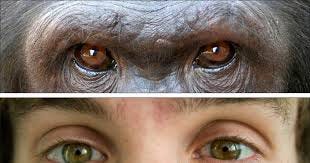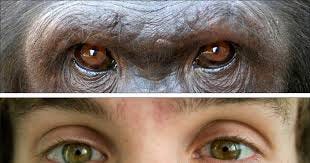The Interview Question that I asked for 40 years that No-one Got Right
Can you think on your feet?
When I was a Graduate Student studying human physiology and pharmacology in sunny Adelaide, Australia I was blessed with time to OBSERVE, THINK and ask the critical question of WHY IS IT SO?
In these times when we are linked to the hip (hand) with devices that provide instant answers to all manner of posed questions, hence we lack this glorious opportunity to observe and ponder. That time is so important for scientists as it allows one to question the current dogma and find a better way. It is the true essence that helps fire innovation and advancement.
One thought that entered my head whilst walking in the parklands around the Medical School at the University of Adelaide, was this.
Humans are the only species that when their eyes are open, CONSTANTLY show the white of their eyes (technically the sclera). WHY?
I have posed this question for 4 decades, especially when interviewing applicants for medical school, not to torment them but to see how they can think critically on their feet. Important especially during stress. Who does not want their doctor to be cool under pressure? Nevertheless, I was always cautious in using this mental barrage at the end of the interview process so as to not derail them.
Often interviewees start with by challenging the notion, which is fine, but no-one has found an exception to the rule in 40 years because indeed, humans are the only species that show the whites of their eyes (more than just iris/pupil) when their eyes are open. Which leaves us at WHY!
The answer is rests in Darwinian terms. Humans have this trait because it offers them an advantage. This is a clue that I would offer to continue the conversation (torment) and only a handful over 40 years have been able to extend the concept into the answer.
The Solution has little to do with the shape of the eye (red herring?) but rests completely with the shape of the eye slits (palpebral fissures is the technical term). In humans it is elongated, whereas in other species the shape matches the shape of the pupil ie it is round (the image is there to remind you).
I pondered this question during my walks and the answer came as a function of the eye & head movement as it relates to prey and predator. Humans, along with a select number of species rely on stereoscopic vision to optimize their perception of depth. Enormously useful in hunting prey as then you knew how to effectively throw your spear or whatever weapon your were using to bring down the prey. So advanced predators employ stereoscopic vision for survival and to do that the eyes must be close together and in the front of the head.
So check stereoscopic vision, but What was the COST?
The answer to that was peripheral vision, i.e., having the ability to survey a vast array of the environment. This is most important for prey, as they need to survey as much of their surroundings as possible to make sure that some nasty predator was not about to sneak up on them. So peripheral vision is more important for them that depth perception. So how do that achieve that? For them the eyes are not paired in front, but move to the side of the head so as much of the 360 degree view is captured at any moment. For them that was the advantage.
Back to the predators and stereoscopic vision and the fundamental question, WHY are HUMANS the only Species that CONSTANTLY show the whites of their eyes when their eyes are open. Yes other species can show their whites on occasion, it is the important connective tissue that gives the eye its shape, but not CONSTANTLY.
What is the ADVANTAGE that have wide eye slit (palpebral fissure) that humans developed? The answer lies back in the PREY & PREDATOR thinking. Whether it is when humans are predators or potentially prey, it is still important to get an assessment of the full environment. But our eyes are in front so we have a limited peripheral vision. Nevertheless, we can improve the magnitude of that field of vision, while at the same time keeping our depth perception, if we move our eyes from side to side. In order for us to not be looking into the inside of our eyelids when we do this we had to change the shape of our eye slits to accommodate the eye movement. Hence we ended up with improved field of view, maintained depth perception and changed the shape of our eye slits to be elongated.
The advantages of doing this is that we can survey our environment by the mere movement of our eyes not our head. The other species MUST move their head to achieve the same results and a moving head can be seen easily. That means the prey can run away, and if you are trying not to be seen by predators then it may give away your location.
So in Darwinian terms being able to survey your environment with depth perception but not surrender your location offers distinct advantages.
Next time your teenager rolls their eyes at your request to do homework or clean their room, just think “wow, Darwinism and adaptation at work, BRAVO”. Well may be not.
In any case, take the time to observe, evaluate and ask the all important question of WHY IS IT SO? Maybe you ended up with innovative ideas, improved understanding of yourself and others, and our place on the Blue Planet and cosmos.





Interesting, provocative and educational, thanks, Mark!